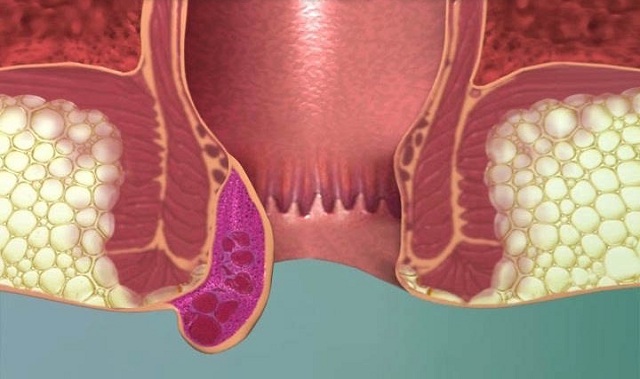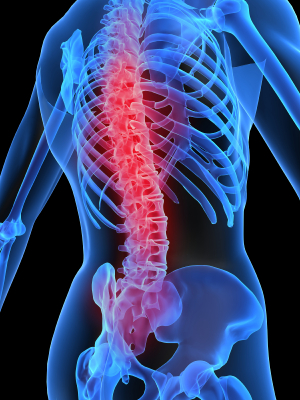o not wash affected areas of skin more than twice a day. Frequent washing can irritate the skin and make symptoms worse.
- Wash the affected area with a mild soap or cleanser and lukewarm water. Very hot or cold water can make acne worse.
- Don't try to "clean out" blackheads or squeeze spots. This can make them worse and cause permanent scarring.
- Avoid using too much make-up and cosmetics. Use water-based products that are described as non-comedogenic (this means the product is less likely to block the pores in your skin).
- Completely remove make-up before going to bed.
- If dry skin is a problem, use a fragrance-free, water-based emollient.
- Regular exercise cannot improve your acne, but it can boost your mood and improve your self-esteem. Shower as soon as possible once you finish exercising as sweat can irritate your acne.
- Wash your hair regularly and try to avoid letting your hair fall across your face.
Treatments can take up to three months to work, so don't expect results overnight.
See your GP if your acne is more widespread – for example, you
have a large number of papules and pustules, or over-the-counter
medication hasn't worked – as you probably need prescription
medication.
Prescription medications that can be used to treat acne include:
- topical retinoids
- topical antibiotics
- azelaic acid
- antibiotic tablets
- in women, the combined oral contraceptive pill
- isotretinoin tablets
If you have severe acne, such as a large number of papules and
pustules on your chest and back as well as your face, or if you have
painful nodules, your GP can refer you to an expert in treating skin
conditions (dermatologist).
A combination of antibiotic tablets and topical treatments is
usually the first treatment option for severe acne. If this doesn't
work, a medication called isotretinoin may be prescribed.
Hormonal therapies or the combined oral contraceptive pill can
also be effective in women who have acne. However, the progestogen-only
pill or contraceptive implant can sometimes make acne worse.
Many of these treatments can take two to three months before
they start to work. It's important to be patient and persist with a
recommended treatment, even if there is no immediate effect.
Topical treatments (gels, creams and lotions)
Benzoyl peroxide
Benzoyl peroxide works as an antiseptic to reduce the number
of bacteria on the surface of the skin. It also helps to reduce the
number of whiteheads and blackheads and has an anti-inflammatory
effect.
Benzoyl peroxide is usually available as a cream or gel. It's
used either once or twice a day. It should be applied 20 minutes after
washing to all of the parts of your face affected by acne.
It should be used sparingly as too much can irritate your
skin. It also makes your face more sensitive to sunlight, so avoid too
much sun and ultraviolet (UV) light, or wear sun cream.
Benzoyl peroxide can have a bleaching effect, so avoid getting it on your hair or clothes.
Common side effects of benzoyl peroxide include:
- dry and tense skin
- a burning, itching or stinging sensation
- some redness and peeling of the skin
Side effects are usually mild and should pass once the treatment has finished.
Most people need a six-week course of treatment to clear most
or all of their acne. You may be advised to continue treatment less
frequently to prevent acne returning.
Topical retinoids
Topical retinoids work by removing dead skin cells from the
surface of the skin (exfoliating) which helps prevent them building up
within hair follicles.
Tretinoin and adapalene are topical retinoids used to treat
acne. They are available in a gel or cream and are usually applied once
a day before you go to bed.
Apply to all of the parts of your face affected by acne 20 minutes after washing your face.
It is important to apply topical retinoids sparingly and avoid excessive exposure to sunlight and UV.
Topical retinoids are not suitable for use during pregnancy as there is a risk that they might cause birth defects.
The most common side effects of topical retinoids are mild irritation and stinging of the skin.
A six-week course is usually required, but you may be advised to continue using the medication less frequently after this.
Topical antibiotics
Topical antibiotics help kill the bacteria on the skin that
can infect plugged hair follicles. They are available as a lotion or
gel that is applied once or twice a day.
A six- to eight-week course is usually recommended. After
this, treatment is usually stopped as there is a risk that the bacteria
on your face could become resistant to the antibiotics. This could
make your acne worse and cause additional infections.
Side effects are uncommon, but can include:
- minor irritation of the skin
- redness and burning of the skin
- peeling of the skin
Azelaic acid
Azelaic acid is often used as an alternative treatment for
acne if the side effects of benzoyl peroxide or topical retinoids are
particularly irritating or painful.
Azelaic acid works by getting rid of dead skin and killing
bacteria. It is available as a cream or gel and is usually applied
twice a day (or once a day if your skin is particularly sensitive).
The medication does not make your skin sensitive to sunlight, so you do not have to avoid exposure to the sun.
You will usually need to use azelaic acid for a month before your acne improves.
The side effects of azelaic acid are usually mild and include:
- burning or stinging skin
- itchiness
- dry skin
- redness of the skin
Antibiotic tablets
Antibiotic tablets (oral antibiotics) are usually used in combination with a topical treatment to treat more severe acne.
In most cases, a class of antibiotics called tetracyclines is prescribed, unless you are pregnant or breastfeeding.
Pregnant or breastfeeding women are usually advised to take an
antibiotic called erythromycin, which is known to be safer to use.
It will usually take about six weeks before you notice an improvement in your acne.
Depending on how well you react to the treatment, a course of oral antibiotics can last four to six months.
Tetracyclines can make your skin sensitive to sunlight and UV
light and can also make the oral contraceptive pill less effective
during the first few weeks of treatment.
You will need to use an alternative method of contraception, such as condoms, during this time.
Hormonal therapies
Hormonal therapies can often benefit women with acne,
especially if the acne flares up around periods or is associated with
hormonal conditions such as polycystic ovary syndrome.
If you don't already use it, your GP may recommend that you
start taking the combined oral contraceptive pill, even if you are not
sexually active. This combined pill can often help improve acne in
women, but may take up to a year before the full benefits are seen.
Co-cyprindiol
Co-cyprindiol is a hormonal treatment that can be used for
more severe acne that doesn't respond to antibiotics. It helps reduce
the production of sebum.
You will probably have to use co-cyprindiol for two to six months before you notice a significant improvement in your acne.
There is a small risk that women taking co-cyprindiol may develop breast cancer in later life.
For example, out of a group of 10,000 women who have not taken
co-cyprindiol, you would expect 16 of them to develop breast cancer by
the time they were 35. This figure rises to 17 or 18 for women who
were treated with co-cyprindiol for at least five years in their early
twenties.
There is also a very small chance of co-cyprindiol causing a
blood clot. The risk is estimated to be around 1 in 2,500 in any given
year.
It is not thought to be safe to take co-cyprindiol if you are
pregnant or breastfeeding. Women may need to have a pregnancy test
before treatment can begin.
Other side effects of co-cyprindiol include:
- bleeding and spotting between your periods, which can sometimes occur for the first few months
- headaches
- sore breasts
- mood changes
- loss of interest in sex
- weight gain or weight loss
Isotretinoin
Isotretinoin has a number of beneficial effects:
- it helps normalise sebum and reduce how much is produced
- it helps prevent follicles becoming clogged
- it decreases the amount of bacteria on the skin
- it reduces redness and swelling in and around spots
However, the drug can also cause a wide range of side effects.
It is therefore only recommended for severe cases of acne that have
not responded to other treatments.
Because of the risk of side effects, isotretinoin can only be prescribed by a specially trained GP or a dermatologist.
Isotretinoin is taken as a tablet. Most people take a four- to
six-month course. Your acne may get worse during the first 7 to 10
days of treatment. However, this is normal and soon settles.
Common side effects of isotretinoin include:
- inflammation, dryness and cracking of the skin, lips and nostrils
- changes in your blood sugar levels
- inflammation of your eyelids (blepharitis)
- inflammation and irritation of your eyes (conjunctivitis)
- blood in your urine
Rarer side effects of isotretinoin include:
- inflammation of the liver (hepatitis)
- inflammation of the pancreas (pancreatitis)
- kidney disease
Read more about the side effects of isotretinoin.
Because of the risk of these rarer side effects, you will need a blood test before and during treatment.
Isotretinoin and birth defects
Isotretinoin will damage an unborn baby. If you're a woman of childbearing age:
- don't use isotretinoin if you are pregnant or you think you are pregnant
- use one, or ideally two, methods of contraception for one month before treatment begins, during treatment and for one month after treatment has finished
- have a pregnancy test before, during and after treatment
You will be asked to sign a form confirming that you
understand the risk of birth defects and are willing to use
contraceptives to prevent this risk, even if you are not currently
sexually active.
If you think you may have become pregnant when taking isotretinoin, contact your dermatologist immediately.
Isotretinoin is also not suitable if you are breastfeeding.
Isotretinoin and mood changes
There have been reports of people experiencing mood changes
while taking isotretinoin. There is no evidence that these mood changes
were the result of the medication.
However, as a precaution, contact your doctor immediately if
you feel depressed or anxious, have feelings of aggression or suicidal
thoughts.
Non-pharmaceutical treatments
Several treatments for acne do not involve medication.
These include:
- comedone extractor – a small pen-shaped instrument that can be used to clean out blackheads and whiteheads
- chemical peels – where a chemical solution is applied to the face, causing the skin to peel off and new skin to replace it
- photodynamic therapy – where light is applied to the skin in an attempt to improve symptoms of acne
Acne Treatment,Acne Treatment,Acne Treatment,Acne Treatment


